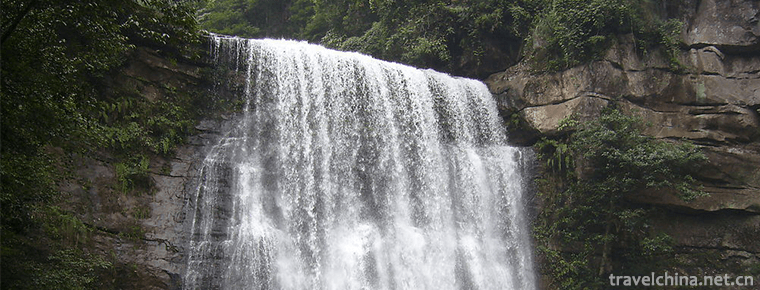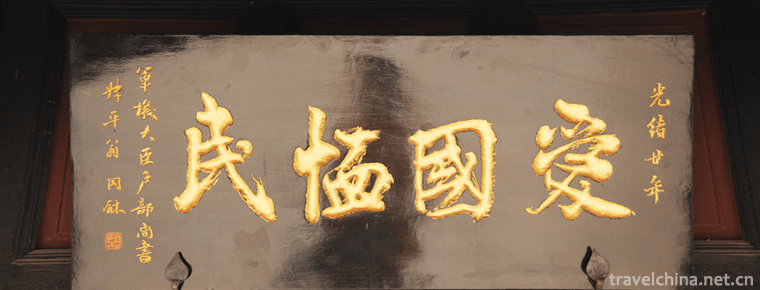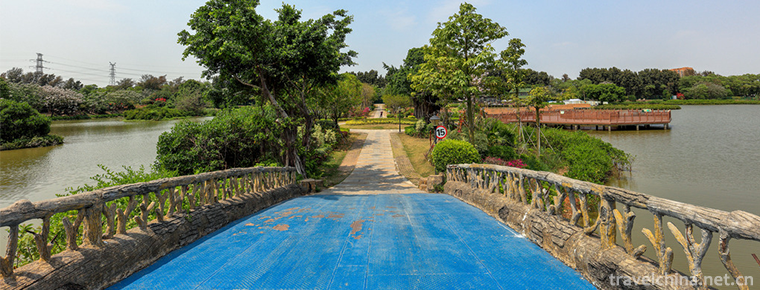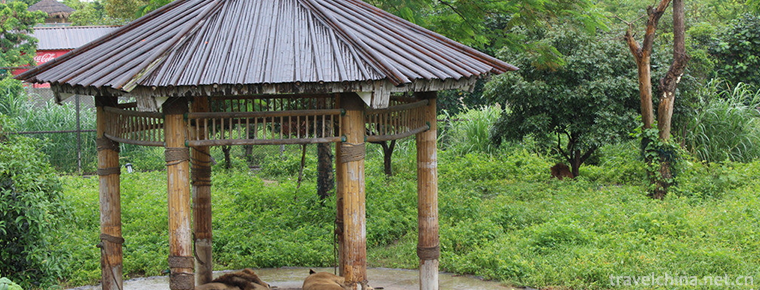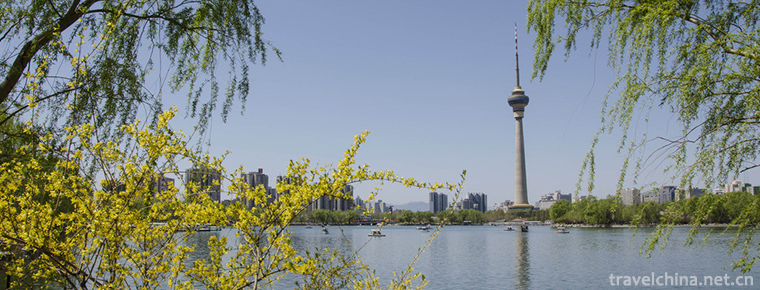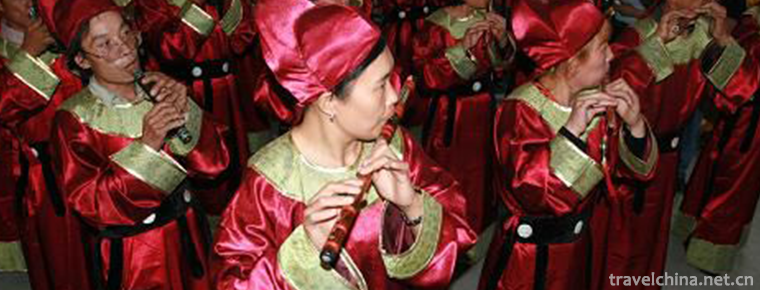Lingyan Temple in Jinan
Lingyan Temple in Jinan
Lingyan Temple, built in the Eastern Jin Dynasty, has a history of more than 1600 years. Located in the north foot of Mount Tai in the southwest of Jinan City, Shandong Province, Changqing County, Wandezhen Lingyanyu Fangshan Yang. Since the Eastern Jin Dynasty, Buddha Tucheng's high-footed monk Lang has built a temple here. Tai Ping Zhenjun, Emperor Taiwu of the Northern Wei Dynasty, abolished Buddhism in seven years (446), and revived in the reign of Emperor Xiaoming in Zhengguang (520-525). In the first year of Zhengguang (520), the statutory Zen master came to visit Fangshan, love its spring stone, rebuild the temple, and gradually flourished. Thereafter, the Tang, Song, Yuan and Ming dynasties were the heyday of the monastery. At its peak, there were more than 500 monks and more than 50 palaces, forming a large-scale ancient building complex. Until the 14th year of the Qianlong reign of the Qing Dynasty (1749), there were still 36 palaces and 18 pavilions, all of which showed the wisdom and superb sculpture skills of the ancient Han working people. National key cultural relics protection units. The temple has a long history and rich Buddhist heritage. Since the Tang Dynasty, it has been known as the "four famous temples in China" together with Guoqing Temple in Zhejiang, Qixia Temple in Nanjing and Yuquan Temple in Hubei, and ranked first. Lingyan Temple is an important part of Mount Tai, a world natural and cultural heritage. It is a national key cultural relic protection unit and a national scenic spot.
Stop at Lingyan Scenic Spot and you will see that the mountains are surrounded by mountains and rocky cliffs; the Baitan sandalwood is beautiful and the scent of spring and sweet tea is fragrant; the historic sites are gathered and the Buddhist sound is curling around. There are not only the Towering Pillar towers and the legendary iron robes, but also the Sui and Tang Dynasties Zhoudian, the colorful clay statues of Luohan in the Song Dynasty, and natural wonders such as "Jingchi Chunxiao", "Fangshan Cuicui", "Mingkong Qingxue". Therefore, the Ming Dynasty writer Wang Shizhen said that "Lingyan is the most secluded place on the back of Mount Tai, you can't travel without visiting Mount Tai."
Introduction to scenic spots
Branch tower
It was built for Hui Chong, a prominent monk of the Tang Dynasty, and rebuilt in the fifth year of Chunhua in the Song Dynasty (1994). It was completed in the second year of Jiayou (1057) and lasted 63 years. "Pizhi" comes from Buddhism, transliterated as "Pizhijialuo", referred to as "Pizhibuddha", Pizhi pagoda, meaning Pizhibuddha pagoda. Pizhi Pagoda is an octagonal nine-storey Pavilion brick tower with a height of 55.7 meters. Its base is an octagonal stone pagoda with relief carved with stories of the conversion of the ancient Indian Peacock Dynasty Asoka King to Buddhism. The tower is built of green brick with waist eaves on each floor, double eaves on the lower three floors and flat seats under the two to four eaves. The eaves and diameters of the towers decrease gradually from bottom to top, and the income and distribution are appropriate. In the first to fourth floors of the tower, there are core pillars, with voucher holes and steps, which can be ascended. From the fifth floor above, the tower is built as a solid body. The tower must turn 90 degrees to the left along the outer waist eaves of the tower wall to enter the upper doorway. The tower is equipped with Iron Pagoda brakes, which are composed of bowl-covered dew pans, cameras, treasure caps, Yuanguang, Yangyue and jewels. Eight iron chains are drooping from the pagoda caps. The eight iron diamonds on the corner of the ninth eaves are used to carry on the tower and continue to the underground, playing a lightning protection role. Pizhi Pagoda is a landmark building of Lingyan Temple, which is magnificent in momentum, beautiful in shape, complex in structure and appropriate in proportion. It is a typical style of Song Dynasty. Zeng Gong, a writer of the Song Dynasty, praised in poetry that "the statutory Zen House is facing a steep valley, with its spiritual towers crowned with hills".
Thousand Buddha Hall
The hall is named for its numerous Buddhist statues. This hall was built in the reign of Zhenguan in Tang Dynasty (627-1649). It was rebuilt in the reign of Jiayou in Song Dynasty, Jiajing in Ming Dynasty and Wanli Dynasty. The existing wooden structure was built in the Ming Dynasty.
The Qianfo Hall is built on a tall platform with seven broad faces and four deep roofs. It has a single eave on the top of the hall. It lifts gently and leaves the eaves far-reaching. Under the eaves, there are sparse and magnificent arches with colorful wood edges and long and high corners, which have the potential to spread their wings and fly. There are eight stone pillars under the front eaves. The pillars are all carved with dragons, phoenixes, flowers, leaves, water affecting lotus petals, treasured lotus and other patterns. The sculptors are exquisite, highlighting the style of Tang and Song Dynasties.
In the middle of the hall, there are three-body Buddhas with caring gold. "Dharma body" refers to the Buddha's innate Dharma embodied in itself. It is called Pilujana Buddha, shaped by rattan-tyre paint. It was transported from Qiantang to Lingyan in the second year of Song Zhiping (1065). The eastern side is "Shen Shen", named Luxenabha, which was cast in 2500 kilograms of copper for the thirteenth year of Chenghua Ming Dynasty (1477). Xiyingshi, named Sakyamuni Buddha, is also made of copper. It was cast in the 23rd year of Jiajing in Ming Dynasty (1544). The statue has a spiral meat bun on the top of its head, graceful body, protruding eyebrows and dignified eyes. The three Buddha statues are all staggered, dignified, fluent in dress lines, concise in dress, and have great artistic appeal.
The Qianfo Hall is most praised by tourists and experts for its forty colored clay statues of Arhat. Among them, 32 statues were made in the three years of Song Zhiping (1066) and eight statues were made in the Wanli period of Ming Dynasty (1573-1620). These statues are situated on the 80 cm high brick girdle waist. The top of the statue is between 105 and 110 cm away from the seat surface. Ancient artists broke away from traditional Buddhism in shaping these images of Arhats.
The model of statue lays stress on realism, has strong secular flavor and real life interest, depicts God by form, expression by god, expression by emotion, reflects the personality and characteristics of each Luohan, and depicts the inner world of Luohan so as to make it real, vivid and closer to life. It is accurate and vivid to observe its shape, or to bow, or to stick, or to clasp, or to sit, or to speak with fingers, or to listen with one's ears. Some are brave and angry, some are kind and mature, some are reasonably contentious, some are closed-eyed and meditative, some are smiling, some are bowing their heads and murmuring, some are overlooking, all meticulous. Looking at its temperament, some are beautiful, some are cold, some are graceful, all are vivid and vivid. In addition, the relationship between human body and clothing is also handled appropriately. Straight lines, virtual and real lines and undulations, instantaneous changes in wrinkles, texture of fabrics, are all accurate and vivid, and have a strong sense of rhythm. A medical expert said that through Luohan's robes, we can see the ancient people's accurate grasp of human anatomy. In addition, when repaired in 1982, it was found that these painted figures also had abdominal cavity like human body, five viscera and six organs made of silk in abdominal cavity, in addition to five baht money, Kaiyuan Tongbao and copper coins of the first three dynasties of Song Dynasty, bronze mirrors of Song Dynasty, inscriptions of ink books and other cultural relics. In 1912, Liang Qichao, a scholar in the late Qing Dynasty, came here to visit, praised the clay statue of Lohan in Qianfodian as "the first sculpture in China", and wrote down the tablet in his own hand. In 1987, after visiting the Temple of Thousand Buddhas in Lingyan, He Jingzhi wrote "How can we really paint gods if we convey them? The pen of God comes to write people". Lingyan 40 Arhats, one by one can arouse the heart of the poem. After the artist Liu Haisu came to Lingyan, he wrote the praise of "Lingyan clay sculpture, the first in the world, flesh and blood, vivid and vivid".
Tomb Tallinn
The cemetery of ancient monks in Lingyan Temple. There are 167 stone tomb towers in the Northern Wei, Tang, Song, Jin, Yuan, Ming and Qing dynasties in Talin, with 81 tombstones and epitaphs. Tomb tower is generally composed of tower base, tower body and tower brake. The tower base is square, circular and octagonal, with relief plutonium.
The tower is tall and tall, with the name of the monk's Dharma inscribed on it. Tasha has wheel, raspberry, elevation moon, jewelry, flowers, dragon patterns and other shapes. Tombstones beside the tombstones usually record the experience of the monks. They witness the historical evolution of Lingyan Temple and are valuable historical materials for the study of Buddhist development history.
The middle part of the tomb pagoda is a north-south Yongdao. At the north end of the tomb pagoda, there are masonry structure, single-layer double eaves Zushi Pagoda (statutory tomb pagoda) in the Northern Wei Dynasty. There are stone-structured towers on both sides of the road. According to the shape of the pagoda, they are divided into six types: square-stele pagoda, bell-shaped pagoda, drum-shaped pagoda, piercing-pagoda (Lama pagoda), classical pagoda and Pavilion
Tomb Tower Lin is a rich collection of ancient stone art museum. Tomb towers have different shapes, delicate structures and reasonable layout; they are rich in sculpture, diverse techniques and exquisite. For example, the pagoda has all kinds of artistic images, carved with the weight-bearing Hercules, under the pressure of mouth expansion, facial distortion, limbs and waist bending, body muscle protrusion, giving people the exaggeration of the strength and the hardship of the load; some carved Knights Cross the lion, hand hockey hitting horse-ball scene; some carved playing lions, naive and bowable; and some carved clothes belt elegant, long silk dance. The entertainment scenes, such as reliefs, all show the wisdom and superb sculpture skills of the ancient working people.
Zhuo Xiquan, Baihe Quan and Shuanghe Quan
Located under the cliff on the east side of Qianfodian, Sanquan is adjacent to each other, commonly known as "Five Steps and Three Springs". Spring water emerges from the stone stream, spring water is sweet and endless all the year round, into a stone pool, like a mirror, "Mirror Pool Spring Dawn" that is why. Zhuo Xiquan, also known as Xizhangquan, has been handed down as a statutory Zen master who knocks on mountains and rocks with tin medals, and the water comes out of its name with the surge of Xizhang. White Crane Spring, also known as Shuanghe Spring, was named after the woodcutter in the mountains who pointed out the spring where the two cranes whistled when the old Buddhist monk was searching for water. Zhuo Xiquan is one of the seventy-two springs in Jinan.
Sweet spring
Lixu, located in the northeast of the monastery, is known as "the first spring of Lingyan". There is a stone sinus in the cliff wall and the bush of miscellaneous trees. The spring water leaks like dew, tinkles and is clear and sweet, so it is called "Manlu Spring". Monks often draw water and boil tea here for cooking, and at night, they often say that the Confucian classics are one of the eight scenic spots in Lingyan.
Cassock Spring
Located under the cliff on the east side of runway Tibetan site, it is listed in the famous spring monument of Jin Dynasty. It was named after a cashmere-like cast iron block standing beside the spring. Springs are abundant, and spring water is continuous throughout the four seasons. It is the main drinking water for monasteries. There are cliffs, gowns, fountains, pools and fishes, and music galleries around the place, which are not interesting. Gouhaoquan is one of the seventy-two springs in Jinan.
Tan Bao Quan
Located a few miles southwest of the monastery, it is named after thousands of years of Green Sandalwood trees growing near the spring. It is the main source of water for the production and living of Lingyan villagers. Tanbaoquan is one of the seventy-two springs in Jinan.
Flying spring
Located in South Lixu of Chongxing Bridge in Lingyan Temple, it is named because spring water leaks from the crevice of cliff wall. Because the spring water slides down along the wall, Shirun water droplets, also known as the cliff here as "dripping cliff". Because of the brilliant glow of water droplets in every sunshine, Emperor Qianlong named it "Yuhua Rock", and wrote the poem "No flying sky scattered, falling into the rocks to smallpox". Because of its magnificent scenery, it was listed as one of the eight sceneries of Lingyan in ancient times.
Lingyan Temple scenic area stone contains orifices, underground Tibetan machine, spring waterfall countless. In addition to Zhuoxiquan, Gouhaoquan and Tanbaoquan, Shuanghe Spring, Baihe Spring, Ganlu Spring, Yinhu Spring, Upper Spring, Feiquan, Huanglong Spring and Longgong Spring are also included in Jinan's famous springs.
Local Characteristics of Lingyan Temple
Lingyan Temple is located at the foot of Lingyan Mountain in the north foot of Shanxi Province. Lingyan Mountain is one of the twelve Branches of Mount Tai, with the main peak at 668 meters above sea level. Lingyan Mountain, formerly known as Fangshan Mountain, is named for its flat top and cut walls. It is also called Yufu Mountain because of its resemblance to a jade seal. The sun of the mountains is the lush Lingyan Valley with a full moon. The winding hills extend to the East and west. Lingyan Temple is situated in this green valley.
The mountains around Lingyan Temple are mainly composed of two parts: the lower layer is called crystalline basement, which is a medium-coarse-grained gneissic monzonitic granite intruded by the late Archaean era 2.416 billion years ago; the upper part is called sedimentary caprock, which is the limestone and shale formed by the Paleozoic Cambrian sedimentation 600 million years ago. It is unconformity overlaid on the crystalline basement and becomes the main body of the mountains.
In addition to faults, the geological structures in Lingyanshan area also develop gravity sliding structures and various fold structures formed by them. Neotectonic movement is also very common and intense, showing an intermittent upward trend. Stratigraphic lithology, geological tectonic conditions and various geological processes constitute the four characteristics of Lingyan Mountains: beautiful, strange, quiet and Austrian.
Lingyan Temple has magnificent natural scenery. It has beautiful stones, steep rocks, secluded caves, sweet springs and wonderful trees. There are Fangshan, Lion Mountain, Xiangshan, Langgong Mountain, Mingkong Mountain, Pearl Mountain, Lingshan, Xiangshan, Jiming Mountain, Huanglan Mountain; there are Neohe Rock, Longgong Rock, Furi Rock, Immortal Rock, Yuhua Rock, Hanyuan Rock; there are Mayi Cave, Baiyun Cave, Kuanyin Cave, Hanyun Cave, Chaoyuan Cave, Tiger Cave; there are Ganlu Spring, Zhuoxi Spring, Baihe Spring, Baohao Spring, Shiguiquan, Shangshan Spring, Huayan Spring. Spring, Longgong Spring, Shenbao Spring, Guancai Spring, Huanglong Spring, Wo Xiangquan and Jiao Baoquan; Hanbo, Tanghuai, Song Ginkgo, Morinda Pine, Mandarin Ducks Sandalwood, Longfeng Sandalwood and other famous ancient trees.
Lingyan Temple has four distinct seasons, pleasant climate and abundant animals and plants. According to statistics, there are 80 species of birds, belonging to 14 orders and 37 families; 5 orders, 9 families and 15 species of mammals; 4 orders, 5 families and 9 species of reptiles; 1 order, 2 families and 4 species of amphibians; 8 orders, 62 families and 194 species of insects. There are 506 vascular plants belonging to 313 genera and 95 families. There are 317 wild plants and 189 cultivated plants. Lingyan main scenic spot has a total forest area of more than 10,000 mu, which is divided into coniferous forest, bamboo forest and economic forest. Coniferous forest, mainly composed of Oriental arborvitae; bamboo forest, mainly light bamboo; economic forest, including apple, hawthorn, apricot, walnut, persimmon, jujube, ginkgo, toon and other tree species. Lingyan Scenic Area is rich in resources of traditional Chinese medicines, with a total of 42 families and 98 species, including wolfberry, Polygonum multiflorum and so on. If you come here in spring, you can also taste a lot of wild vegetables in the mountains. According to the survey, there are 15 families and 35 kinds of edible wild vegetables. The common ones are Chenopodium, Pengzi, Portulaca oleracea, Shepherd's purse, Pogostemon, Mint, Artemisia annua, Chrysanthemum morifolium, etc.
Guide before departure
1. Tourist buses in Changqing District go directly to Lingyan Temple (free rides are available for full-price tickets)
2. Jinan You60 Road (Free ride for full price tickets)
Jiefangqiao Bus Parking lot (Carrefour North) (Morning: 7:30-8:00)
Bus parking lot of municipal five courtyards (8:00-8:30 a.m.)
Shengli Street (8:00-8:30 a.m.)










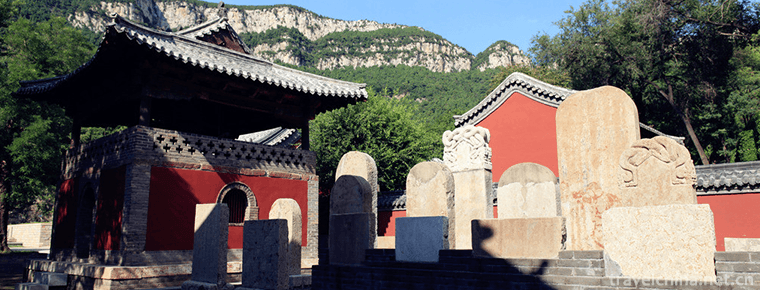
-
Tiananmen Square
East Chang'an Avenue, Dongcheng District, Beijing, China.
Views: 317 Time 2018-10-02 -
Huangjinglaolin Scenic Spot
Huangjing Old Forest Scenic Spot is located at the junction of Sichuan and Guizhou provinces in southern Sichuan Province and northwest Gulin County. Its total planned area is 9122.6 hectares.
Views: 104 Time 2019-01-18 -
Mars Manor Scenic Spot
Ma's Manor, located in Xijiang Village, 20 kilometers west of Anyang City, Henan Province, is the mansion of Ma Piyao, governor of Guangdong Province in the Qing Dynasty..
Views: 144 Time 2019-02-06 -
Shenzhen Maritime Pastoral
Shenzhen Maritime Pastoral Tourist Area is administratively located in Shajing Street, Baoan District, Shenzhen City. It is located at the eastern port of Pearl River estuary.
Views: 199 Time 2019-02-08 -
Xiangshi Zoo
Xiangshi Zoo is invested and constructed by Dongguan Yuye World Industrial Investment Co., Ltd. The total investment of the project is estimated to be 350 million yuan..
Views: 140 Time 2019-02-25 -
yuyuantan park
Yuyuantan Park, AAAA grade scenic spot, is located in Haidian District. East Gate is adjacent to Diaoyutai State Guest House; West to West Third Ring Road is separated from CCTV Tower; South Gate is n.
Views: 164 Time 2019-03-08 -
Music of Lantian Puhua Water Club
Lantian Puhua Water Concert Music is a kind of folk blowing music which has been circulated in Puhua Town of Lantian County, Shaanxi Province for more than 1000 years.
Views: 429 Time 2019-05-11 -
Leting drum
Music Pavilion Drum is a representative form of traditional music drum book and drum music in northern China. It is widely spread in eastern Hebei, Beijing, Tianjin and northeastern Liaoning, Jilin, H.
Views: 271 Time 2019-05-11 -
Lv Jiahe Folk Song
Lvjiahe Folk Song is a kind of folk song which is popular in Lvjiahe Village, Guanshan Town, Danjiangkou City, Hubei Province. Located in Wudang Mountain Scenic Area, the village retains a large numbe.
Views: 198 Time 2019-05-15 -
Beijing Sport Univerrsity
Beijing Sports University was founded in 1953, formerly known as the Central College of Physical Education, renamed Beijing Sports College in 1956 and Beijing Sports University in 1993. It is a nation.
Views: 175 Time 2019-09-06 -
Nanchong cultural undertakings
By the end of 2019, Nanchong has 10 cultural centers, 242 cultural stations and 10 public libraries. There are 8 museums, 28 cultural relics protection and management institutions, 18 national key cultural relics protection units, 112 provincial-level cultural relics protection units.
Views: 297 Time 2020-12-17 -
Guangan secondary industry
In 2019, the industrial added value of Guang'an City will reach 28.87 billion yuan, an increase of 8.8%, and its contribution rate to economic growth will be 34.9%. At the end of the year, there were 597 Industrial Enterprises above Designated Size, and.
Views: 162 Time 2020-12-19

